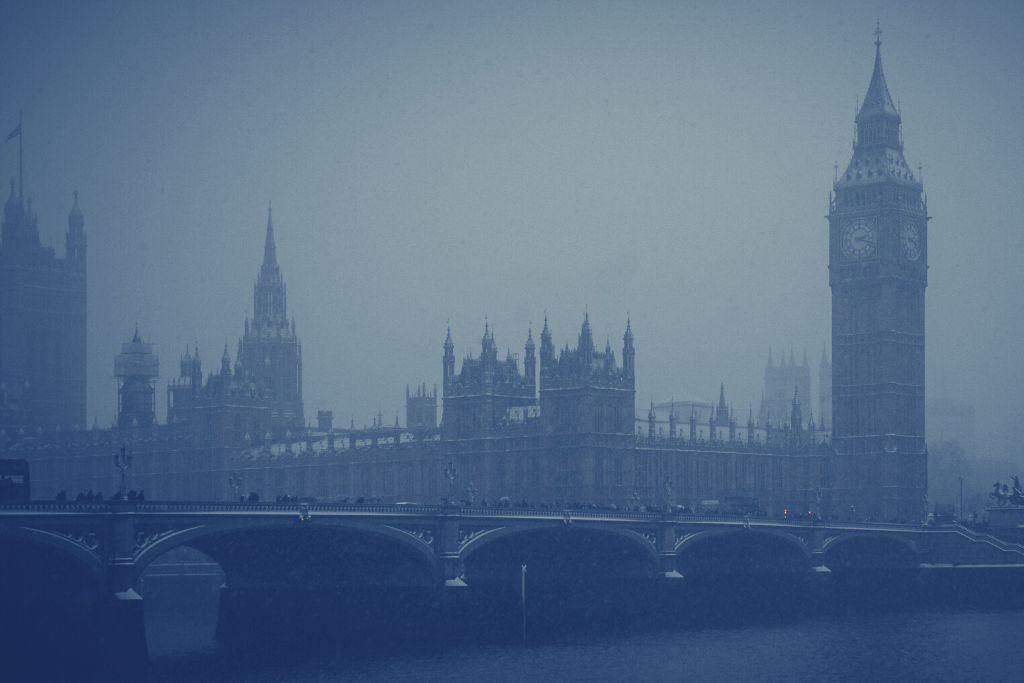“Fog everywhere. Fog up the river where it flows among green airs and meadows; fog down the river, where it rolls defiled among the tiers of shipping, and the waterside pollutions of a great (and dirty) city … Chance people on the bridges peeping over the parapets into a nether sky of fog, with fog all round them, as if they were up in a balloon and hanging in the misty clouds,” wrote Charles Dickens in 1852, in his ninth novel, Bleak House.
Precisely a century after Charles Dickens penned this evocative description of fog in London, on 5 December 1952, a thick, yellow pollution fog descended upon the city. During the five days it smothered the UK capital, this environmental disaster known as the “Great Smog” or the “Big Smoke” was primarily caused by a combination of preventable industrial pollution and unfavorable weather conditions. It is estimated to have cost anywhere between 4,000 and 12,000 lives.
While tragic, the event served as a catalyst for change and led to significant improvements in air quality and urban planning, including the passing of the Clean Air Act in 1956, a landmark legislation to control smoke emissions.
Today, more than 70 years following this disaster, air pollution continues to plague many modern cities. The World Health Organization (WHO) estimates that outdoor air pollution alone causes around 7 million premature deaths annually.
Therefore, the valuable lessons from London’s deadly smog of 1952 have never been more relevant for the world’s cities.
Air Pollution Monitoring and Regulation

The Great Smog highlighted the need for monitoring air quality and implementing effective regulations to control pollution. Modern cities must invest in advanced monitoring systems to track air pollution levels and take prompt action when necessary. This includes setting air quality standards, implementing emission controls for industries and vehicles, and promoting clean energy alternatives.
Sustainable Transportation

The smog crisis in London drew attention to the role of transportation in urban air pollution. Modern cities should prioritize sustainable transportation options like public transit, cycling infrastructure, and pedestrian-friendly design. Encouraging the use of electric vehicles and implementing carpooling initiatives can significantly reduce emissions and improve air quality.
Urban Planning and Green Spaces

London’s smog revealed the importance of urban planning and the need for green spaces within cities. Modern urban planning should prioritize green infrastructure, such as parks, gardens, and trees, which can help absorb pollutants and improve air quality. By incorporating green spaces, cities can mitigate the effects of pollution and create healthier environments for their residents.
Public Awareness and Education

The Great Smog raised public awareness about the harmful effects of air pollution and its impact on human health. It’s imperative for future-forward cities to invest in public education campaigns to raise awareness about the importance of clean air and the individual actions people can take to reduce pollution. Encouraging sustainable practices and providing information on air quality can empower citizens to make informed choices.
International Cooperation

The smog crisis in London demonstrated the need for international cooperation in addressing air pollution, which is among one of the most pressing environmental issues that knows no borders. Therefore, modern cities must work together to tackle shared environmental challenges, exchange best practices, and implement coordinated policies. Collaboration at the regional and global levels is essential to combat air pollution effectively.
Adaptability and Resilience

London’s experience with the deadly smog highlighted the importance of adaptability and resilience in responding to environmental crises. Modern cities should develop comprehensive emergency response plans to address sudden increases in pollution levels. These plans should include measures to protect vulnerable populations, provide access to clean indoor spaces, and ensure effective communication during such events.
Proactive Steps for Blue Skies

“Poverty is hierarchic, while smog is democratic,” sociologist Ulrich Beck famously said. Even though the poorer and more marginalized communities suffer worse, air pollution is an all-encompassing crisis that affects billions of lives negatively.
By learning from the lessons of London’s deadly smog of 1952, modern cities can take proactive measures to improve air quality, protect public health, and create sustainable urban environments with green lands and blue skies. It is crucial to prioritize the well-being of citizens and work towards a cleaner and healthier future for all.






